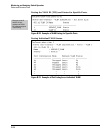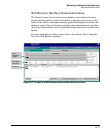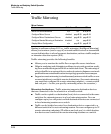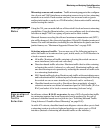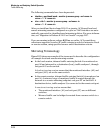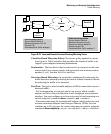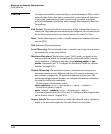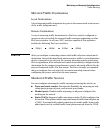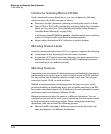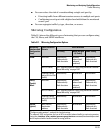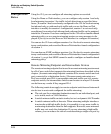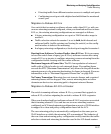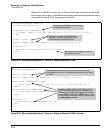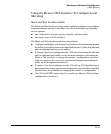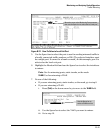
Monitoring and Analyzing Switch Operation
Traffic Mirroring
Criteria for Selecting Mirrored Traffic
On the monitored sources listed above, you can configure the following
criteria to select the traffic you want to mirror:
■ Direction of traffic movement (entering or leaving the switch, or both)
■ Type of IPv4 or IPv6 traffic entering the switch, as defined by a classifier-
based service policy (see “Selecting Inbound Traffic Using Advanced
Classifier-Based Mirroring” on page B-66)
In software release K.14.01 or greater, classifier-based service policies
replace ACL-based traffic selection in mirroring sessions.
■ Source and/or destination MAC addresses in packet headers
Mirroring Session Limits
A switch running software release K.12.xx or greater supports the following:
■ A maximum of four mirroring (local and remote) sessions
■ A maximum of 32 remote mirroring endpoints (exit ports connected to a
destination device that receive mirrored traffic originating from moni-
tored interfaces on a different switch)
Mirroring Sessions
A mirroring session consists of a mirroring source and destination (endpoint).
A mirroring source can be a port or static-trunk list, mesh, or VLAN interface.
For any session, the destination must be a single (exit) port. The exit port
cannot be a trunk, VLAN, or mesh interface.
Multiple mirroring sessions can be mapped to the same exit port, which
provides flexibility in distributing hosts, such as traffic analyzers or an IDS.
In a remote mirroring endpoint, the IP address of the exit port and the remote
destination switch can belong to different VLANs.
Mirroring sessions can have the same or a different destination. You can
configure an exit port on the local (source) switch and/or on a remote switch
as the destination in a mirroring session. When configuring a mirroring
destination, take into account the following options:
■ Mirrored traffic belonging to different sessions can be directed to the
same destination or to different destinations.
B-34



